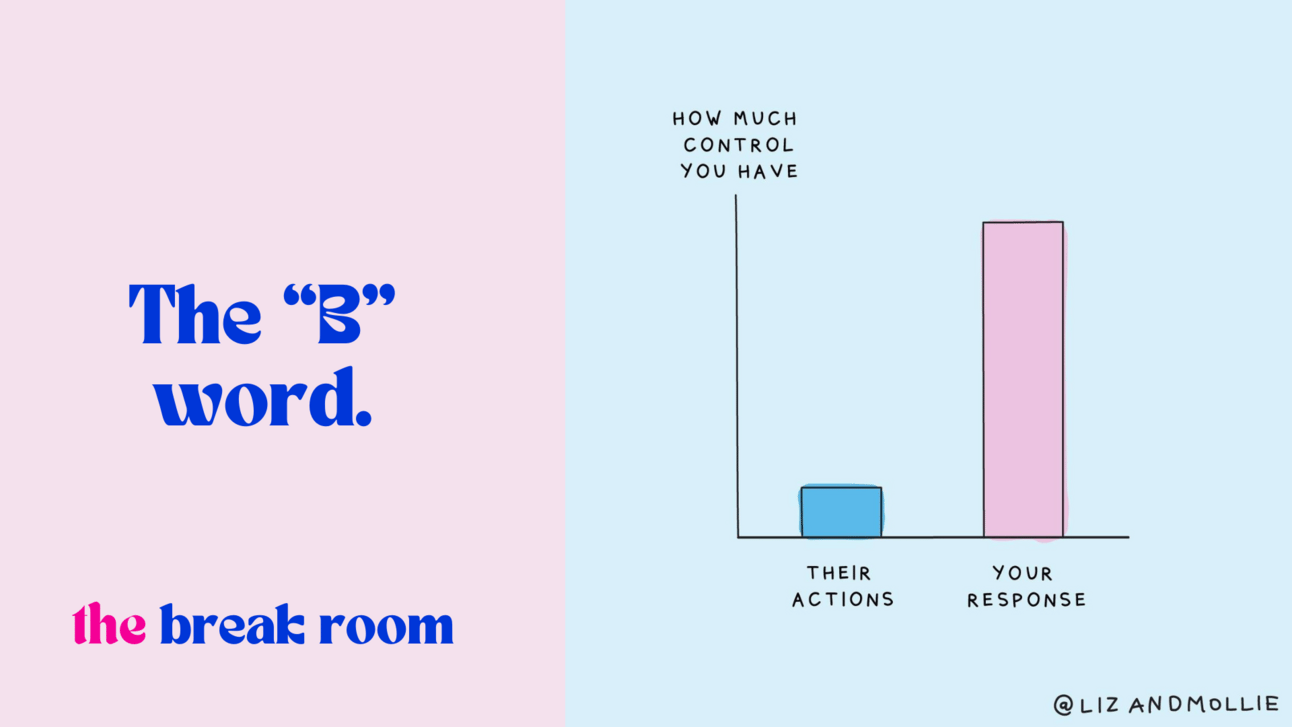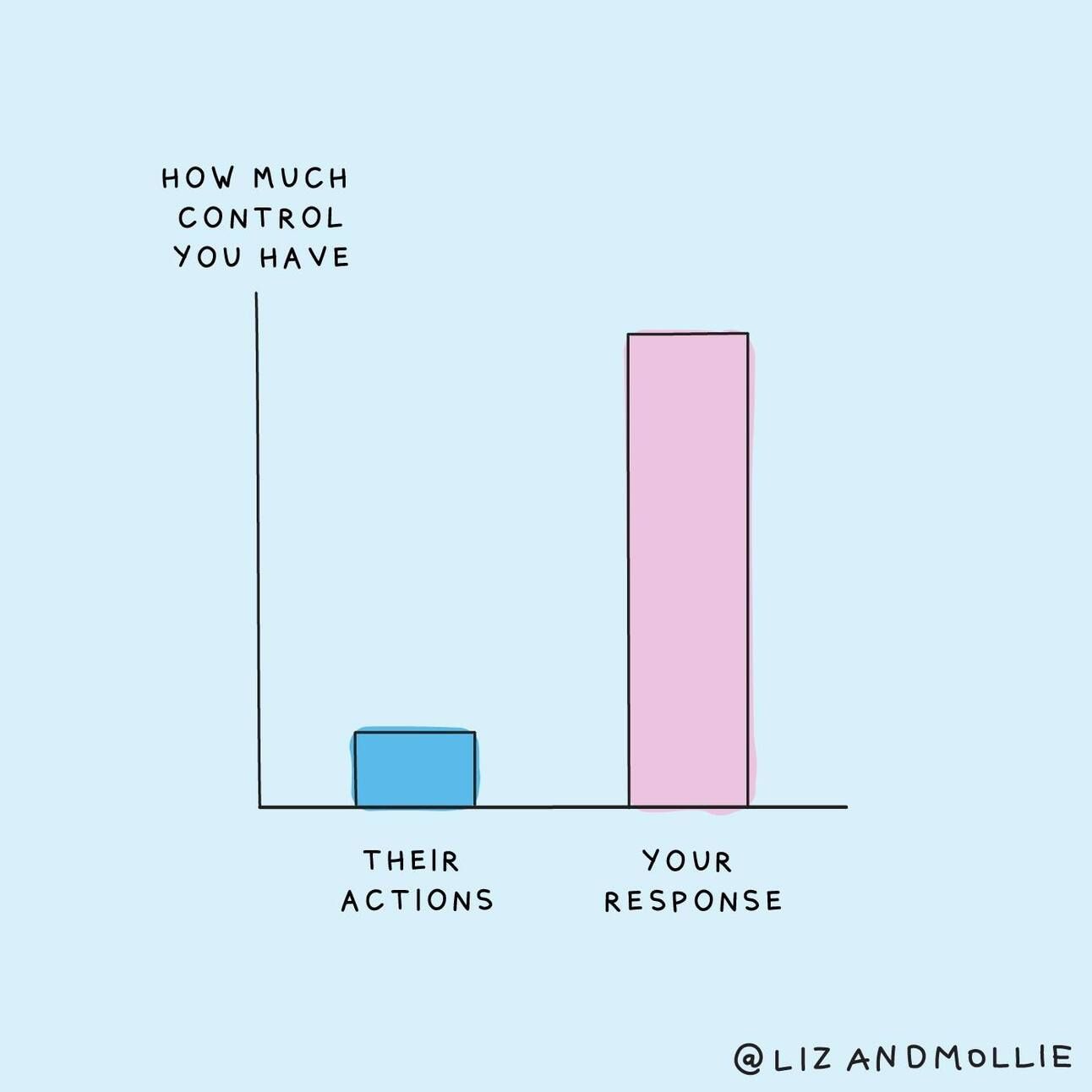- The Break Room
- Posts
- The "B" word
The "B" word
Rethinking leadership boundaries to set yourself up for success in 2024.

There are two categories of boundaries you need to be aware of as a leader:
👉 Your own.
👉 The boundaries your team members set.
And you need to understand the culture of your organization in order to support both.
So we’re on the same page:
Setting boundaries at work means establishing healthy professional practices for yourself. These boundaries often can help you stay productive and happy at work and allow you to separate your work life and personal life more effectively. (Indeed)
Setting, and Keeping, Your Own Boundaries
Please don’t sleep on this as we head into a new year. Your mental health is IMPORTANT and burnout is inevitable if you don’t take care to understand your boundaries.
Said another way: what are you prioritizing next year? How will you protect and uphold those priorities?
Start with reflection.
What habits have you created that work well for you?
Have there been moments at work that raised your internal temperature? That’s usually a sign a boundary has been crossed (or not communicated!).

Once you have a list of these moments, you can start to name the boundary.
Here’s a sample of my output from this exercise:
The 30 minute slack rule.
If I get a slack that immediately raises my blood pressure, I walk away. Ask for time before I respond. Even better, I get on the phone and clarify intent when everyone’s in a less emotional state.
💡 Tip: I’ve never regretted waiting to hit “send.”
Clarify intent before asking for time.
Throwing time on calendars without warning or a heads up is a no-go. If it’s done to me, I ask for clarity of intent: what’s the purpose/outcome you expect so I can best prepare?
Your personal phone is your personal phone.*
I don’t care how close we are, if we work together and I manage you, I’m not texting you on holidays. There is no greater panic than seeing your boss’s name on your cell phone. If it’s outside of work hours, don’t expect to hear from me!
*In less formal cultures, or with peer relationships, this differs for me and may for other teams. What’s most important is that you communicate your boundaries so everyone is on the same page.
Hold myself accountable.
If someone gives me feedback, I hold myself accountable for the feelings I caused, not the intent of my actions.
Did you notice that each boundary above is something that I can control? I’m not asking other people to stop slacking me or wait until a certain time to respond to emails. The boundaries that work best as ones that dictate what we will or won’t do in the face of challenges.

My recommendation is to have 5-10 boundaries and allow room for flexibility. Do you have any hard boundaries that you will not compromise? Call that out. Most of the boundaries should be flexible, allowing room for trial and error as you test out this muscle.
Don’t skip this step.
Okay, you’ve audited your boundaries, you have a list of what you will/won’t do in 2024!

You need to communicate your boundaries.
99% of boundary crossing comes from other people being completely unaware of the boundary. Let’s change that in 2024!
Put your boundaries in a google doc, Notion page, Sharepoint, wherever you keep important team documents and information. And then do two things:
Let your team know that it exists.
Encourage your team to create their own.
Tip: call this doc your “Working Norms” to make it accessible. You can even add it to an existing “Ways of Working” doc if you have one already.
Understanding your team’s boundaries
Boundaries determine who we give power to and when. As a leader, you should be interested in the boundaries that your team members set. It gives you valuable insight into their values and priorities, and foresight into possible conflict.
❗Do not be the oblivious leader in 2024 who charges forward with a plan and doesn’t check in with your team.
Here are questions I use to understand team boundaries:
What do you want to leave behind? Any meetings, rituals, or behaviors not serving you or the team?
What new meetings, rituals, or behaviors do you want to see?
What motivates you?
What demotivates you?
How do you prefer to be communicated with at work?
Describe communication behaviors that are ineffective for you personally.
What values are important to you at work?
Because of this, I know the quickest ways to lose trust, and can also evaluate when I may need to cross a boundary (how to communicate it!) and how to best handle it.
The messy middle
This process will take time and practice and messiness (ugh, I know!). What’s missed completely in this framework is how to effectively resolve conflict when it inevitably arises.
What happens when someone knows about a boundary and crosses it anyway?How do you handle continued boundary crossing?
What happens if your boss could care less?
That’s for another day.
Reply